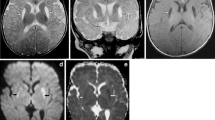Abstract
Background
Kashmir has a population that largely consumes polished rice which is deficient in thiamine. Furthermore, lactating women in this region are prone to severe thiamine deficiency because of their traditional food avoidance practices. Infantile beriberi is common in exclusively breastfed infants of thiamine deficient mothers in Kashmir.
Methods
This was a one year prospective hospital-based study. We included 50 exclusively breastfed infants in our study. All patients were evaluated as per unit protocol including complete septic workup and metabolic workup. Most of our patients belonged to low and middle income group families, and mothers were on customary dietary restriction. Demographic and anthropometric data were collected from all the study participants. In addition, data regarding the treatments received by the study population and overall mortality were collected.
Results
The mean age, male:female ratio, and mean weight of the study population were 3.15±0.97 months, 1.5:1, and 5.1±1.1 kg, respectively. Traditional food avoidance practices were followed by 80% of the mothers. Irritability was observed in 40 (80%) patients. Blepharoptosis was observed in 30 (60%). Septic workup including cerebro spinal fluid analysis was normal in all patients. Predominant magnetic resonance imaging finding was bilateral basal ganglia hyperintensity. Whole blood thiamine diphosphate levels showed a drastic decrease (10-49 nmol/L). Ten percent of the study infants died.
Conclusion
In exclusively breastfed infants, we observed acute infantile encephalopathy with epidemiological, clinical, biochemical, and radiological features suggestive of infantile Wernicke’s encephalopathy and a favourable therapeutic response to thiamine supplementation during the acute stage.
Similar content being viewed by others
References
Sharma S, Mishra D, Aneja S, Kumar R, Jain A, Vashishtha VM, et al. Consensus guidelines on evaluation and management of suspected acute viral encephalitis in children in India. Indian Pediatr 2012;49:897–910.
World Health Organization, United Nations High Commissioner for Refugees. Thiamine deficiency and its prevention and control in major emergencies. Geneva: NHD/WHO, 1999.
Fattal-Valevski A, Kesler A, Sela BA, Nitzan-Kaluski D, Rotstein M, Mesterman R, et al. Outbreak of life-threatening thiamine deficiency in infants in Israel caused by a defective soybased formula. Pediatrics 2005;115:e233–e238.
Soukaloun D, Kounnavong S, Pengdy B, Boupha B, Durondej S, Olness K, et al. Dietary and socio-economic factors associated with beriberi in breastfed Lao infants. Ann Trop Paediatr 2003;23:181–186.
Luxemburger C, White NJ, ter Kuile F, Singh HM, Allier-Frachon I, Ohn M, et al. Beri-beri: the major cause of infant mortality in Karen refugees. Trans R Soc Trop Med Hyg 2003;97:251–255.
McGready R, Simpson JA, Cho T, Dubowitz L, Changbumrung S, Böhm V, et al. Postpartum thiamine deficiency in a Karen displaced population. Am J Clin Nutr 2001;74:808–813.
Qureshi UA, Sami A, Altaf U, Ahmad K, Iqbal J, Wani NA, et al. Thiamine responsive acute life threatening metabolic acidosis in exclusively breast-fed infants. Nutrition 2016;32:213–216.
Wani NA, Qureshi UA, Jehangir M, Ahmad K, Ahmad W. Infantile encephalitic beriberi: magnetic resonance imaging findings. Pediatr Radiol 2016;46:96–103.
Herve C, Beyne P, Lettéron P, Delacoux E. Comparison of erythrocyte transketolase activity with thiamine and thiamine phosphate ester levels in chronic alcoholic patients. Clin Chim Acta 1995;234:91–100.
Talwar D, Davidson H, Cooney J, St JO’Reilly D. Vitamin B(1) status assessed by direct measurement of thiamin pyrophosphate in erythrocytes or whole blood by HPLC: comparison with erythrocyte transketolase activation assay. Clin Chem 2000;46:704–710.
Burton BK. Inborn errors of metabolism in infancy: a guide to diagnosis. Pediatrics 1998;102:e69.
Zuccoli G, Pipitone N. Neuroimaging findings in acute Wernicke’s encephalopathy: review of the literature. AJR Am J Roentgenol 2009;192:501–508.
Kornreich L, Bron-Harlev E, Hoffmann C, Schwarz M, Konen O, Schoenfeld T, et al. Thiamine deficiency in infants: MR findings in the brain. AJNR Am J Neuroradiol 2005;26:1668–1674.
Author information
Authors and Affiliations
Corresponding author
Additional information
Funding: None.
Ethical approval: This study was approved by the Departmental Ethical Committee of SKIMS Srinagar.
Competing interest: None.
Contributors: Bhat JI conceived the study idea and conducted the study. Ahmad QI did the literature search. Ahangar AA analyzed the data and prepared the initial draft of the manuscript. Charoo BA and Sheikh MA provided intellectual inputs in the preparation of manuscript. Syed WA planned the study and supervised the conduct of the sessions. All authors approved the version to be published.
Rights and permissions
About this article
Cite this article
Bhat, J.I., Ahmed, Q.I., Ahangar, A.A. et al. Wernicke’s encephalopathy in exclusive breastfed infants. World J Pediatr 13, 485–488 (2017). https://doi.org/10.1007/s12519-017-0039-0
Received:
Accepted:
Published:
Issue Date:
DOI: https://doi.org/10.1007/s12519-017-0039-0




